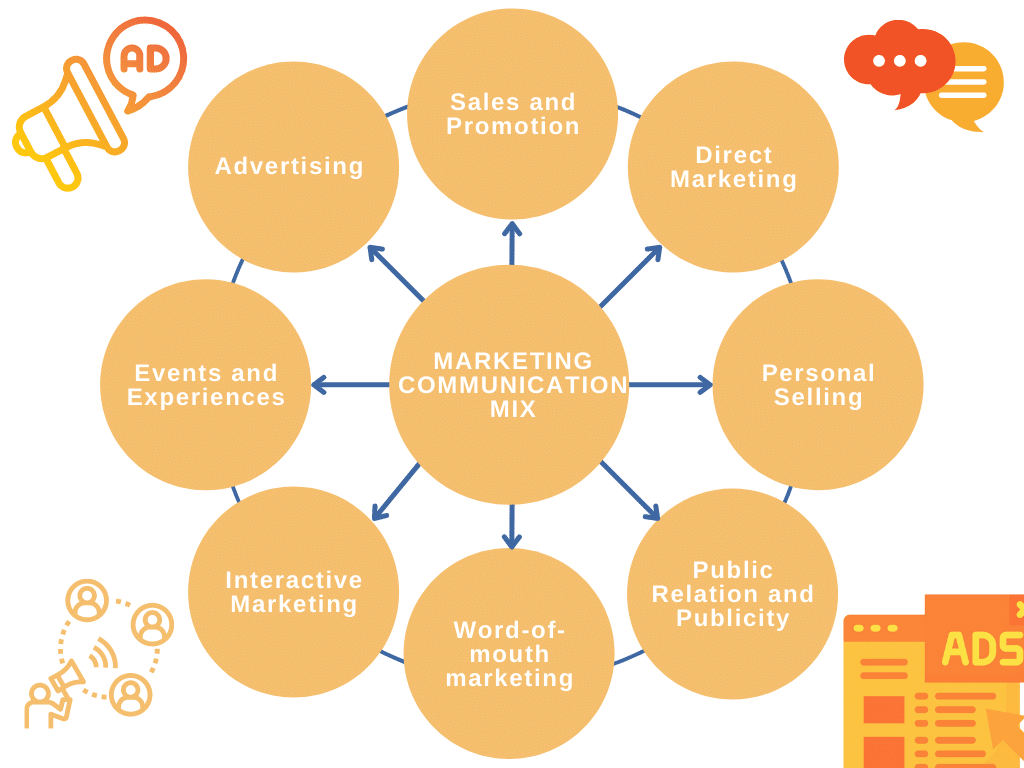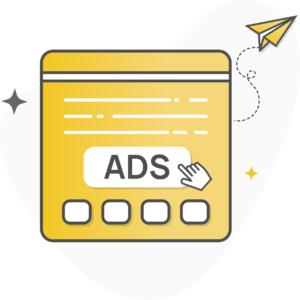Introduction
I have walked you all through the introduction of marketing communication in the previous chapter. In this chapter, I will talk about the marketing communication mix. What it encompasses and how the right mix can be incorporated will be seen in this chapter.
What is Marketing Communication Mix?
We have spoken of what marketing communication is and how it can be done. While talking about the type of marketing communication I have walked you through the basic framework in which this communication can be achieved.
The four methods in which marketing communication can be done is
- One-to-one communication
- One-to-many communication
- Many-to-one communication and
- Many-to-many communication
To quickly refresh the same please find the link here and read up the types of marketing communication methods.
While the earlier chapter conveyed ways in which marketing communication can be done, there are some elements that are utilised by the marketer to make the communication. There are eight popular tools of marketing communication.
The strategy which the Marketer formulates to arrive at the most optimal utilisation of these eight tools and make the most benefit for the organisation is the marketing communication mix.
To summarise, there are eight popular tools or elements of marketing communication and the proportion in which these tools can be used to hit the goals of marketing a product is known as the marketing communication mix.
Let us now look at the elements of the marketing communication mix.
The eight elements of marketing communication
In the above section, it was repeatedly told that there are eight elements of marketing communication that come together and make a marketing communication mix. The following diagram clearly shows what those are

Advertising, sales promotion, events and experiences (sponsorship), public relations and publicity, direct marketing, interactive marketing, word-of-mouth marketing, and personal selling are what make up the eight tools of marketing communication.
The Marketing Communication Mix refers to all of these communication techniques as a whole. Let us now see what the features of these elements are
Advertising
Advertising is a method of communicating with a product's or service's users. Advertisements are messages that are paid for by the senders and are intended to inform or influence the receivers.
Advertising is one of the most extensively used communication tools since it allows a company's whole product and service information to be easily delivered to a large target audience. Unique and appealing advertising messages have a better connection with their target audience than those that are not. More about advertising can be read here
Sales Promotion
The sales promotion consists of a number of short-term incentives designed to convince people to begin purchasing goods and services. This marketing strategy not only helps to maintain existing consumers but also attracts new ones by offering additional perks.
Some of the sales promotion methods include rebates, discounts, paybacks, schemes such as buy one get one free or buy two get one free, coupons, seasonal offers like Diwali dhamaka, and so on.
Sales Promotions as a marketing communication mix can be very effective to drive up short term sales and brands do rely on this method of communication but it falls short to establish a long term relationship.
Direct Marketing
This method does not rely on any third-party channel to deliver its message to the customer. It is a type of communication that is targeted at a single individual or corporation in order to generate new business, improve the profile of a company or product, or make a sale.
Direct marketing techniques include direct mail, telemarketing, and email marketing. With the rise of internet platforms, this mode of communication to influence customer behaviour has also been on the rise.
Personal Selling
Personal selling is the most effective tool adopted by companies. It’s a historically adopted method of reaching out to customers. In this method, salesmen approach the prospective customers directly and inform them about the goods and services they are selling.
This falls under the category of one-to-one selling and has a very high conversion ratio of prospective customers to real customers. It is also an extremely reliable form of communication. An example of this can be the direct sales done via direct calls.
Publicity and Public Relations
Publicity is the spread of the image of the brand. When people talk about products or services it creates a buzz and inspires others to do the same. A rightly designed strategy can leverage these conversations and make establish better communications.
Businesses engage in a variety of social activities in order to build a positive brand image in the marketplace. This process of creating long-term public awareness by engaging with the company's numerous target markets on a regular basis is known as public relations.
Publicity and Public relations help to create a better brand image and the product or service it offers will be well-positioned in the minds of customers when the time to purchase comes about.
Word-of-mouth Marketing
It is one of the most extensively used communication methods but one which is not entirely in a firm's hands to design. Customers share their experiences with their peers and acquaintances about recent purchases of goods and services.
This strategy is critical for businesses because the brand's image is based on the customer's perception of the brand and the message he conveys to others.
Word-of-mouth marketing may be the least expensive method of advertising a company can do because it is free. However, because you have no control over who says what about your brand, it is also one of the most difficult kinds of communication.
Interactive Marketing
Interactive marketing is a kind of marketing effort that responds to the actions, reactions, and preferences of current and potential customers. Prospects' behavioural preferences are used to trigger interactive marketing methods.
It’s a two-way communication method and usually picks up cues to gauge the behavioural responses of the customer to analyse the weight which can be assigned to that prospective customer to be turned into a real customer.
Chat boxes are one example of interactive marketing where once the customer takes the step towards the product online the bot can directly interact with them. Analysis of the behaviour of customers has become easier online. More about the same can be read here.
Events and Experiences
Several companies support events such as sports, entertainment, non-profit, and community activities with the goal of reinforcing their brand in the minds of customers and establishing long-term relationships.
One Example of Experience-based communication is the popular ready to cook brand Licious organising stalls at famous locations and inviting customers to a tasting session. The experience thus provided here becomes a mode of communication
Conclusion
The marketing communication mix describes the various methods that a company can use to inform, convince, and remind customers about the products and services it offers. I hope this chapter gave a thorough understanding of the elements of the marketing communication mix.

